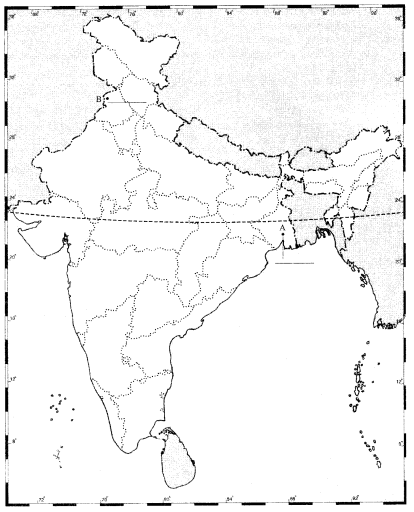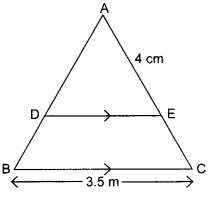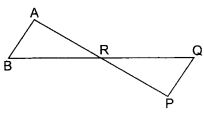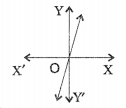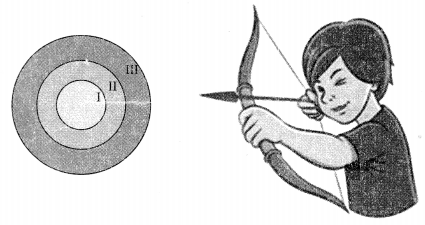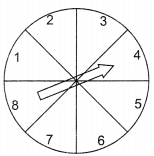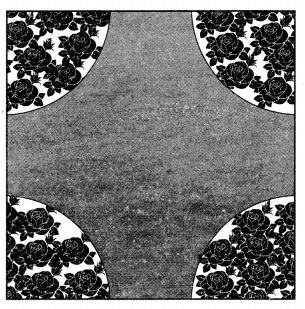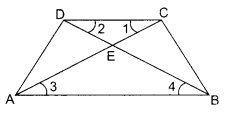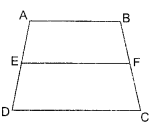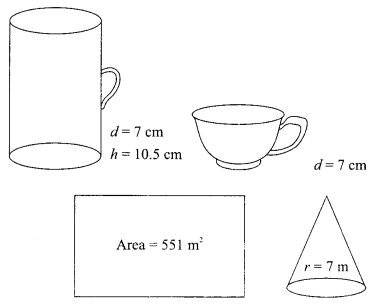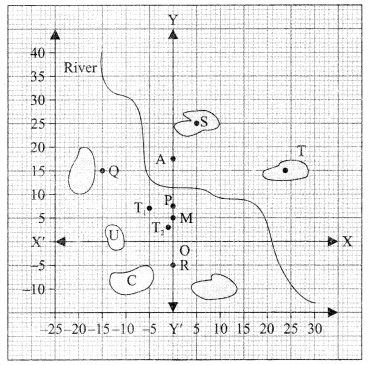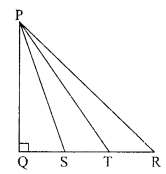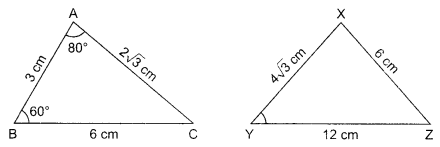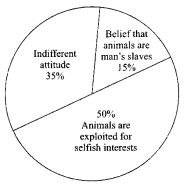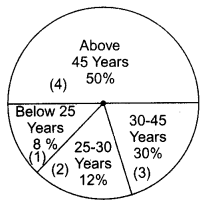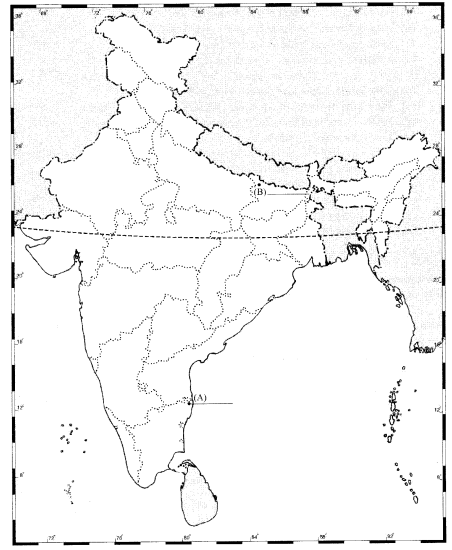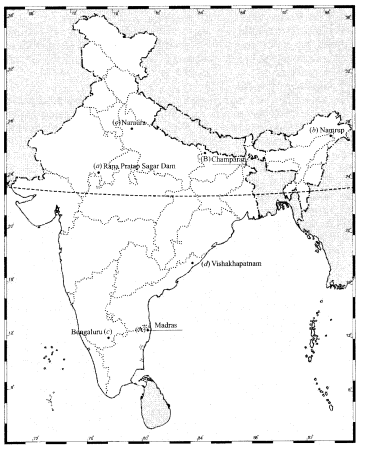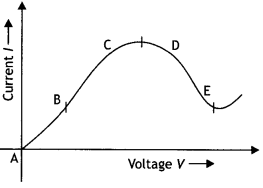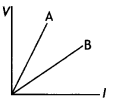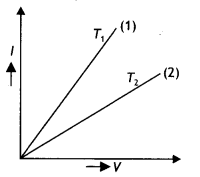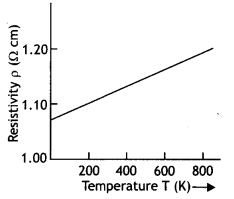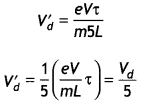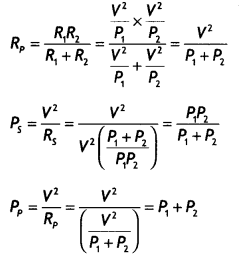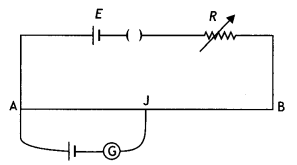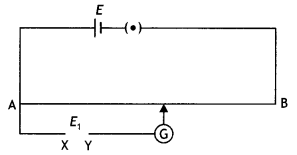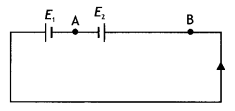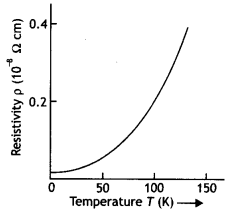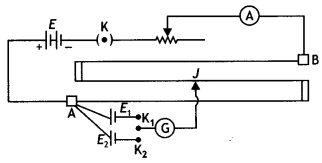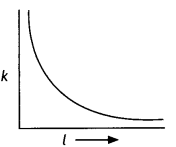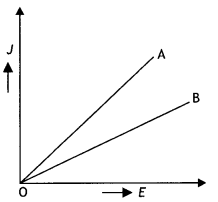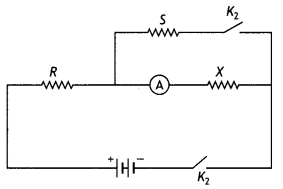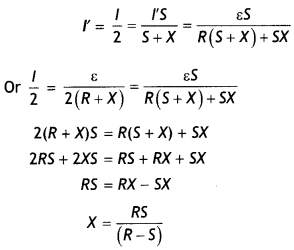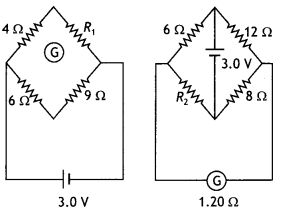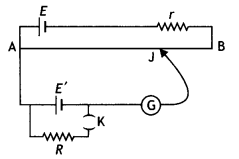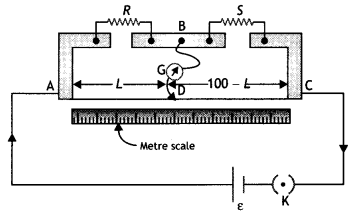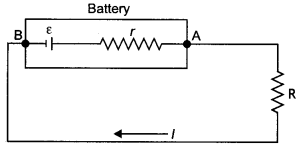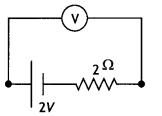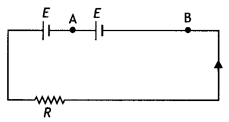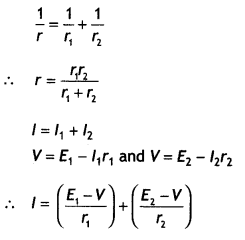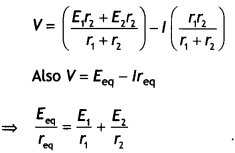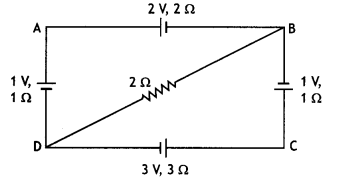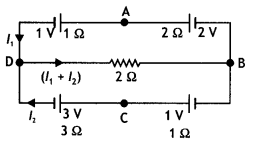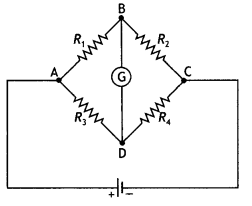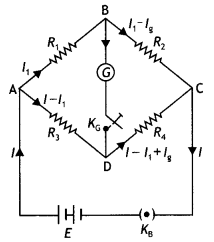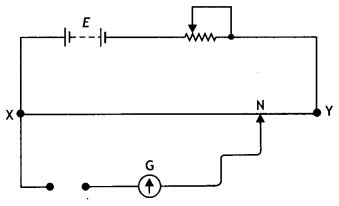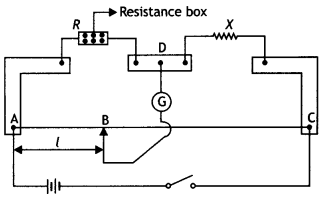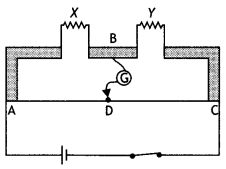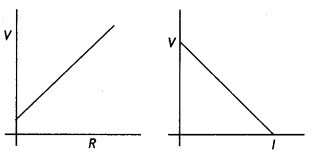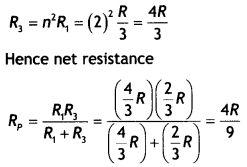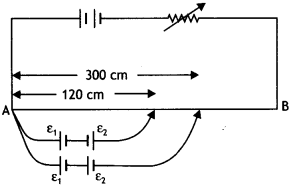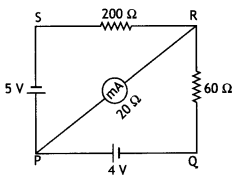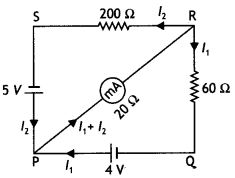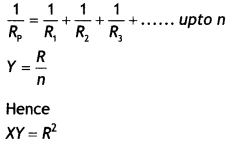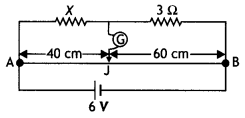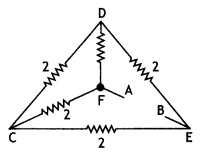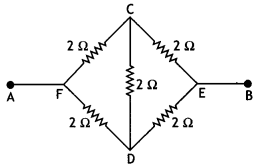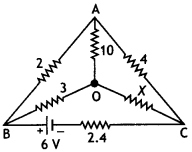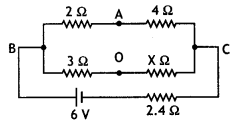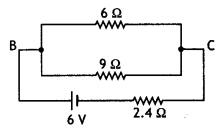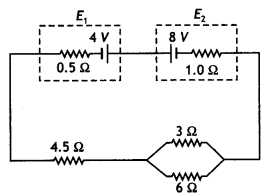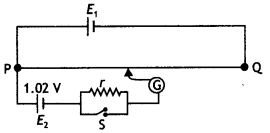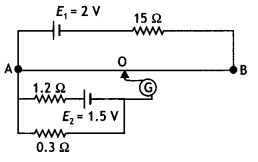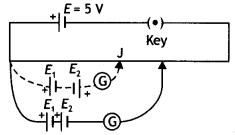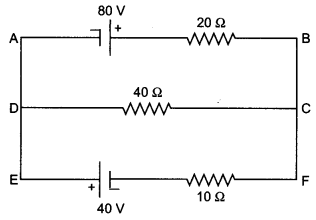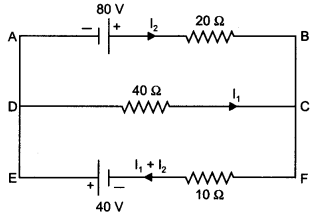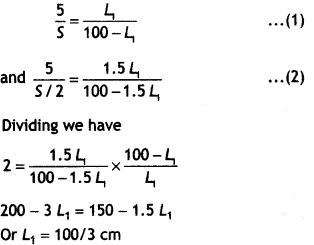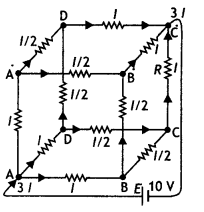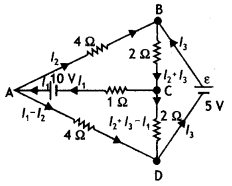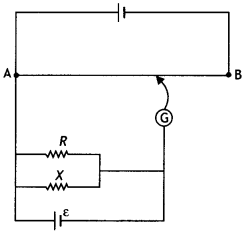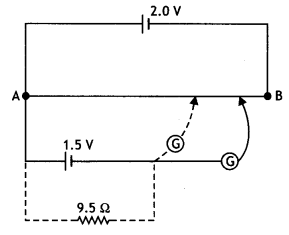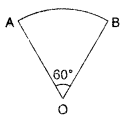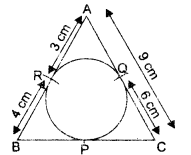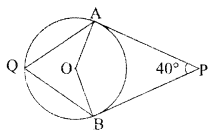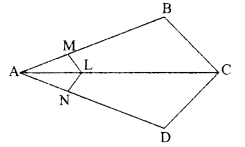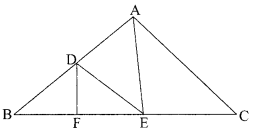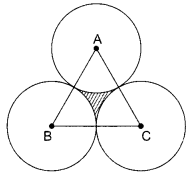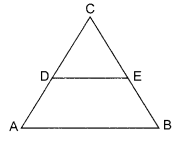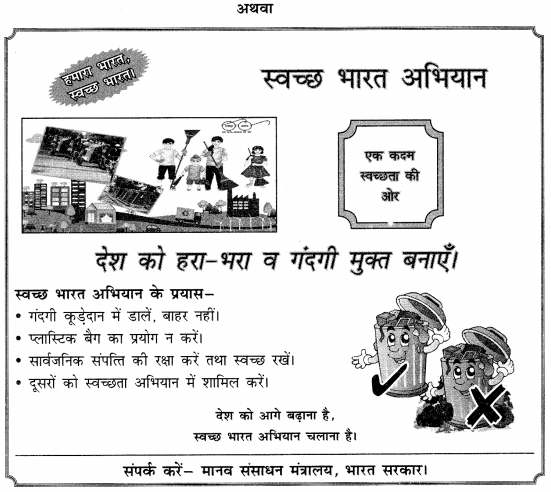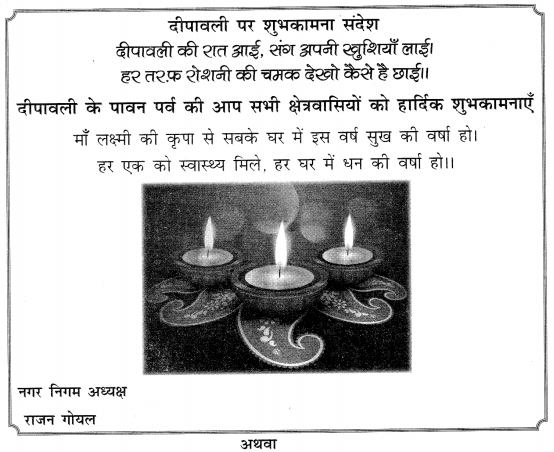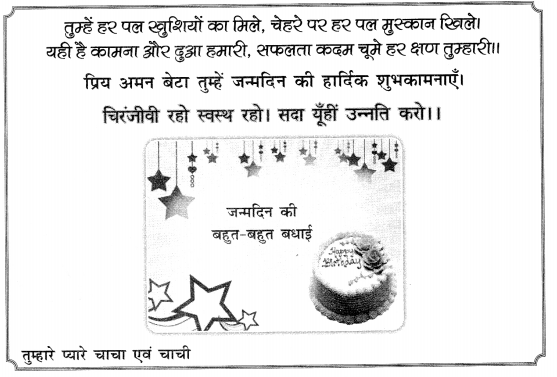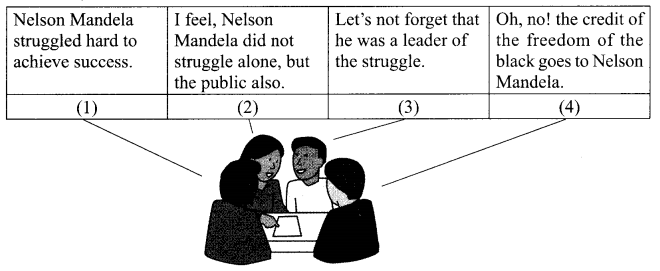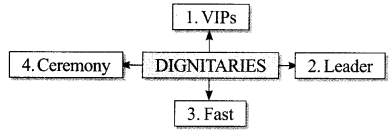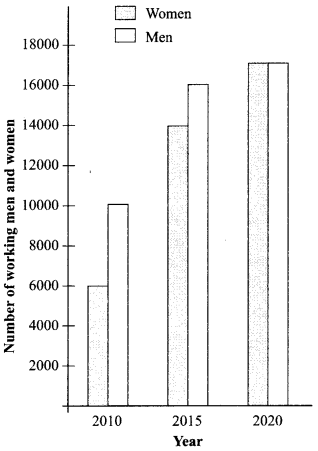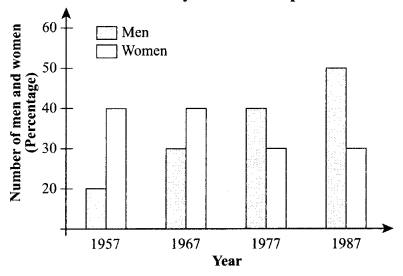Students can access the CBSE Sample Papers for Class 10 Hindi with Solutions and marking scheme Course A Set 2 will help students in understanding the difficulty level of the exam.
CBSE Sample Papers for Class 10 Hindi Course A Set 2 with Solutions
निर्धारित समय : 3 घंटे
अधिकतम अंक : 80
सामान्य निर्देश:
(क) इस प्रश्न-पत्र के दो खंड हैं- ‘अ’ और ‘ब’।
(ख) खंड ‘अ’ में कुल 10 वस्तुपरक प्रश्न पूछे गए हैं। सभी प्रश्नों में उपप्रश्न दिए गए हैं। दिए गए निर्देशों का पालन करते हुए प्रश्नों के उत्तर दीजिए।
(ग) खंड ‘ब’ में कुल 7 वर्णनात्मक प्रश्न पूछे गए हैं। प्रश्नों में आंतरिक विकल्प दिए गए हैं। दिए गए निर्देशों का पालन करते हुए प्रश्नों के उत्तर दीजिए।
खंड ‘अ’- वस्तुपरक प्रश्न ( अंक 40)
अपठित गद्यांश (अंक 5)
प्रश्न 1.
गद्यांश को ध्यानपूर्वक पढ़िए और उस पर आधारित प्रश्नों के उत्तर सही विकल्प चुनकर दीजिए। (1 × 5 = 5)
उत्तर-
उन्नीसवीं शताब्दी से पहले, मानव और पशु दोनों की आबादी भोजन की उपलब्धता तथा प्राकृतिक विपदाओं आदि के कारण सीमित रहती थी। कालांतर में जब औद्योगिक क्रांति के कारण मानव सभ्यता की समृद्धि में भारी वृद्धि हुई तब उसके परिणामस्वरूप कई पश्चिमी देश ऐसी बाधाओं से लगभग अनिवार्य रूप से मुक्त हो गए। इससे वैज्ञानिकों ने अंदाजा लगाया कि अब मानव जनसंख्या विस्फोटक रूप से बढ़ सकती है।
परंतु इन देशों में परिवारों का औसत आकार घटने लगा था और जल्दी ही समृद्धि और प्रजनन के बीच एक उलटा संबंध प्रकाश में आ गया था। जीवविज्ञानियों ने मानव समाज की तुलना जानवरों की दुनिया से कर इस संबंध को समझाने की कोशिश की और कहा कि ऐसे जानवर जिनके अधिक बच्चे होते हैं, वे अधिकतर प्रतिकूल वातावरण में रहते हैं और ये वातावरण प्रायः उनके लिए प्राकृतिक खतरों से भरे रहते हैं।
चूँकि इनकी संतानों के जीवित रहने की संभावना कम होती है, इसलिए कई संतानें पैदा करने से यह संभावना बढ़ जाती है कि उनमें से कम से कम एक या दो जीवित रहेंगी। इसके विपरीत, जिन जानवरों के बच्चे कम होते हैं, वे स्थिर और अनुकूल वातावरण में रहते हैं। ठीक इसी प्रकार यदि समृद्ध वातावरण में रहने वाले लोग केवल कुछ ही बच्चे पैदा करते हैं, तो उनके ये कम बच्चे उन बच्चों को पछाड़ देंगे, जिनके परिवार इतने समृद्ध नहीं थे तथा इनकी आपस की प्रतिस्पर्धा भी कम होगी। इस सिद्धांत के आलोचकों का तर्क है कि पशु और मानव व्यवहार की तुलना नहीं की जा सकती है।
वे इसके बजाए यह तर्क देते हैं कि सामाजिक दृष्टिकोण में परिवर्तन इस घटना को समझाने के लिए पर्याप्त हैं। श्रम-आश्रित परिवारों में बच्चों की बड़ी संख्या एक वरदान के समान होती है। वे जल्दी काम कर परिवार की आय बढ़ाते हैं। जैसे-जैसे समाज समृद्ध होता जाता है, वैसे-वैसे बच्चे जीवन के लगभग पहले 25-30 सालों तक शिक्षा ग्रहण करते हैं। जीवन के प्रारंभिक वर्षों में उर्वरता अधिक होती है तथा देर से विवाह के कारण संतानों की संख्या कम हो जाने की संभावना बनी रहती है।
(i) निम्नलिखित में से कौन-सा ऊपर लिखित पाठ्यांश का प्राथमिक उद्देश्य है?
(क) मानव परिवारों के आकार के संबंध में दिए उस स्पष्टीकरण की आलोचना जो पूरी तरह से जानवरों की दुनिया से ली गई टिप्पणियों पर आधारित है।
(ख) औद्योगिक क्रांति के बाद अपेक्षित जनसंख्या विस्फोट न होने के कारणों की विवेचना।
(ग) औद्योगिक क्रांति से पहले और बाद में पर्यावरणीय प्रतिबंधों और सामाजिक दृष्टिकोणों से परिवार का आकार कैसे प्रभावित हुआ, का अंतर्संबंध दर्शाना।
(घ) परिवार का आकार बढ़ी हुई समृद्धि के साथ घटता है। इस तथ्य को समझने के लिए दो वैकल्पिक सिद्धांत प्रस्तुत करना।
उत्तर-
(घ) परिवार का आकार बढ़ी हुई समृद्धि के साथ घटता है। इस तथ्य को समझने के लिए दो वैकल्पिक सिद्धांत प्रस्तुत करना।
(ii) पाठ्यांश के अनुसार निम्नलिखित में से कौन-सा जनसंख्या विस्फोट के विषय में सत्य है?
(क) पश्चिमी देशों में इसलिए नहीं हुआ, क्योंकि औद्योगीकरण से प्राप्त समृद्धि ने परिवारों को बच्चों की शिक्षा की विस्तारित अवधि को वहन करने का सामर्थ्य प्रदान किया था।
(ख) यह घटना विश्व के उन क्षेत्रों तक सीमित है, जहाँ औद्योगिक क्रांति नहीं हुई है।
(ग) श्रम आधारित अर्थव्यवस्था में केवल उद्योग के आधार पर ही परिवार का आकार निर्भर रहता है।
(घ) इसकी भविष्यवाणी पश्चिमी देशों में औद्योगिक क्रांति के समय जीवित कुछ लोगों द्वारा की गई थी।
उत्तर-
(घ) इसकी भविष्यवाणी पश्चिमी देशों में औद्योगिक क्रांति के समय जीवित कुछ लोगों द्वारा की गई थी।
(iii) अंतिम अनुच्छेद निम्नलिखित में से कौन-सा कार्य करता है?
(क) यह पहले अनुच्छेद में वर्णित घटना के लिए एक वैकल्पिक स्पष्टीकरण प्रस्तुत करता है।
(ख) यह दूसरे अनुच्छेद में प्रस्तुत स्पष्टीकरण की आलोचना करता है।
(ग) यह वर्णन करता है कि समाज के समृद्ध होने के साथ सामाजिक दृष्टिकोण कैसे बदलते हैं।
(घ) यह दूसरे अनुच्छेद में प्रस्तुत घटना की व्याख्या करता है।
उत्तर-
(क) यह पहले अनुच्छेद में वर्णित घटना के लिए एक वैकल्पिक स्पष्टीकरण प्रस्तुत करता है।
(iv) पाठ्यांश में निम्नलिखित में से किसका उल्लेख औद्योगिक देशों में औसत परिवार का आकार हाल ही में गिरने के एक संभावित कारण के रूप में नहीं किया गया है।
(क) शिक्षा की विस्तारित अवधि।
(ख) पहले की अपेक्षा देरी से विवाह करना।
(ग) बदला हुआ सामाजिक दृष्टिकोण।
(घ) औद्योगिक अर्थव्यवस्थाओं में मजदूरों की बढ़ती माँग।
उत्तर-
(घ) औद्योगिक अर्थव्यवस्थाओं में मजदूरों की बढ़ती माँग।
(v) पाठ्यांश में दी गई कौन-सी जानकारी बताती है कि निम्नलिखित में से किस जानवर के कई बच्चे होने की संभावना है?
(क) एक विशाल शाकाहारी जो घास के मैदानों में रहता है और अपनी संतानों की भरसक सुरक्षा करता है।
(ख) एक सर्वभक्षी, जिसकी आबादी कई छोटे द्वीपों तक सीमित है और जिसे मानव अतिक्रमण से खतरा है।
(ग) एक मांसाहारी जिसका कोई प्राकृतिक शिकारी नहीं है, लेकिन उसे भोजन की आपूर्ति बनाए रखने के लिए लंबी दूरी तय करनी पड़ती है।
(घ) एक ऐसा जीव जो मैदानों और झीलों में कई प्राणियों का शिकार बनता है।
उत्तर-
(घ) एक ऐसा जीव जो मैदानों और झीलों में कई प्राणियों का शिकार बनता है।
अथवा
विज्ञान-शिक्षण के पक्षधरों ने कल्पना की थी कि शिक्षा में इसकी शुरुआत पारंपरिकता, कृत्रिमता और पिछड़ेपन को दूर करेगी। यह सोच पुराने समय से चली आ रही- ‘तथ्य प्रचुर पाठ्यचर्या’, जिसके अंतर्गत-आलोचना, चुनौती, सृजनात्मकता व विवेचनात्मकता का अभाव था, आदि के कारण पैदा हो रही थी। मानवतावादियों ने सोचा था कि वैज्ञानिक पद्धति मध्यकालीन मतवाद के अंधविश्वासों को जड़ से मिटा देगी।
किंतु हमारे शिक्षकों ने रासायनिक प्रतिक्रियाओं की समझ को भी प्रेमचंद की कहानियों की तरह केवल पढ़ा व रटाकर उन्हें नीरस बना दिया। शिक्षा में विज्ञान-शिक्षण सम्मिलित करने के लिए यह तर्क दिया गया था कि इससे बच्चे विज्ञान की खोजों से परिचित हो सकेंगे तथा अपने वास्तविक जीवन में घट रही घटनाओं के बारे में कुछ सीखेंगे। वे वैज्ञानिक विधि का अध्ययन कर तार्किक रूप से कैसे सोचना है, के कौशल में पारंगत होंगे।
इन उद्देश्यों में से केवल पहले ही में एक सीमित सफलता मिली है। दूसरे व तीसरे में व्यावहारिक रूप से बच्चे कुछ भी नहीं प्राप्त कर पा रहे हैं। अधिकतर बच्चों से भौतिकी और रसायन विज्ञान के तथ्यों के बारे में कुछ जानने की उम्मीद की जा सकती है, लेकिन वे शायद ही जानते हों कि उनका कंप्यूटर अथवा कार का इंजन कैसे कार्य करता है अथवा क्यों उनकी माता जी सब्जी पकाने के लिए उसे छोटे टुकड़ों में काटती हैं।
जबकि वैज्ञानिक पद्धति में रुचि रखने वाले किसी भी उज्ज्वल लड़के को ये बातें सहज रूप से ही ज्ञात हो जाती हैं। वैज्ञानिक पद्धति की शिक्षा अधिकांश विद्यालयों में भली प्रकार से नहीं दी जा रही है। दरअसल, शिक्षकों ने अपनी सुविधा और परीक्षा-केंद्रित सोच के कारण, यह सुनिश्चित कर लिया है कि छात्र वैज्ञानिक पद्धति न सीखकर ठीक इसका उल्टा सीखें, अर्थात वे जो बताएँ, उस पर आँख मूंदकर विश्वास करें और पूछे जाने पर उसे जस का तस परीक्षा में लिख दें।
वैज्ञानिक पद्धति को आत्मसात करने के लिए लंबे व्यक्तिगत अनुभव तथा परिश्रम व धैर्य पर आधारित वैज्ञानिक मूल्यों की आवश्यकता होती है, और जब तक इसे संभव बनाने के लिए शैक्षिक या सामाजिक
प्रणलियों को बदल नहीं दिया जाता है, वैज्ञानिक तकनीक में सक्षम केवल कुछ बच्चे ही सामने आएँगे तथा इन तकनीकों को आगे विकसित करने वालों की संख्या इसका भी अंश मात्र ही होगी।
(i) लेखक का तात्पर्य है कि शिक्षकों ने?
(क) अपने सीमित ज्ञान के कारण विज्ञान पढ़ाने में रुचि नहीं ली है।
(ख) विज्ञान शिक्षा को लागू करने के प्रयासों को विफल किया है।
(ग) बच्चों को अनुभव आधारित ज्ञान प्राप्त करने के लिए प्रेरित किया है।
(घ) मानतावादियों का समर्थन करते हुए कार्य किया है।
उत्तर-
(ख) विज्ञान शिक्षा को लागू करने के प्रयासों को विफल किया है।
(ii) स्कूल शिक्षा में विज्ञान शिक्षण के प्रति लेखक का क्या रवैया है?
(क) तटस्थ
(ख) सकारात्मक
(ग) व्यंग्यात्मक
(घ) नकारात्मक
उत्तर-
(घ) नकारात्मक
(iii) उपर्युक्त पाठ्यांश निम्नलिखित में से किस दशक में लिखा गया होगा?
(क) 1950-60
(ख) 1970-80
(ग) 1980-90
(घ) 2000-10
उत्तर-
(क) 1950-60
(iv) लेखक वैज्ञानिक पद्धति को लागू करने में विफलता के लिए निम्नलिखित किस कारक को सबसे अधिक ज़िम्मेदार ठहराता है?
(क) शिक्षक
(ख) परीक्षा के तरीके
(ग) प्रत्यक्ष अनुभव की कमी
(घ) सामाजिक और शिक्षा प्रणाली
उत्तर-
(ग) प्रत्यक्ष अनुभव की कमी
(v) यदि लेखक वर्तमान समय में आकर विज्ञान शिक्षण का प्रभाव सुनिश्चित करना चाहे तो निम्नलिखित में से किस प्रश्न के उत्तर में दिलचस्पी लेगा?
(क) क्या छात्र दुनिया के बारे में अधिक जानते हैं?
(ख) क्या छात्र प्रयोगशालाओं में अधिक समय बिताते हैं?
(ग) क्या छात्र अपने ज्ञान को तार्किक रूप से लागू कर सकते हैं?
(घ) क्या पाठ्यपुस्तकों में तथ्याधारित सामग्री बढ़ी है?
उत्तर-
(ग) क्या छात्र अपने ज्ञान को तार्किक रूप से लागू कर सकते हैं?
अपठित पद्यांश (अंक 5)
प्रश्न 2.
पद्यांश को ध्यानपूर्वक पढ़िए और उस पर आधारित प्रश्नों के उत्तर सही विकल्प चुनकर दीजिए। (1 × 5 = 5)
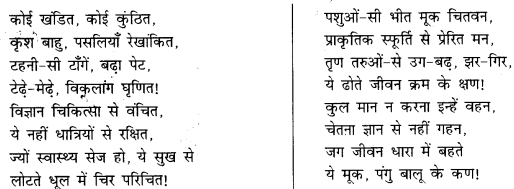
(i) काव्यांश आपके अनुसार किस विषय पर लिखा गया है?
(क) गाँव के बच्चों में कुपोषण की समस्या।
(ख) गाँव के बच्चों में चेतना ज्ञान का अभाव।
(ग) गाँवों में चिकित्सा सुविधाओं का अभाव।
(घ) गाँव के बच्चों की दयनीय दशा का वर्णन।
उत्तर-
(घ) गाँव के बच्चों की दयनीय दशा का वर्णन।
(ii) दूसरे पद में कवि कह रहा है कि?
(क) गाँव में विज्ञान की शिक्षा नहीं दी जा रही है।
(ख) गाँव में शिशु जन्म हेतु पर्याप्त दाइयाँ नहीं हैं।
(ग) गाँव में बच्चे स्वास्थ्य के प्रति सजग रहकर शारीरिक व्यायाम कर रहे हैं। ङ्के
(घ) गाँव में बच्चे अपने मित्रों के साथ धूल में कुश्ती जैसे खेल खेल रहे हैं।
उत्तर-
(ख) गाँव में शिशु जन्म हेतु पर्याप्त दाइयाँ नहीं हैं।
(iii) गाँव के बच्चों की स्थिति कैसी है?
(क) कुपोषित, खिन्न तथा अशिक्षित है।
(ख) क्षीणकाय, किंतु कुल के मान का ध्यान करने वाले हैं।
(ग) प्राकृतिक वातावरण में रहते हुए स्फूर्ति से भरे हुए हैं।
(घ) पशुओं की तरह बलिष्ठ परंतु असहाय व मूक हैं।
उत्तर-
(क) कुपोषित, खिन्न तथा अशिक्षित है।
(iv) काव्यांश में कवि का रवैया कैसा प्रतीत होता है?
(क) वे बच्चों की दशा के विषय में व्यंग्य कर मनोरंजन करना चाह रहे हैं।
(ख) वे बच्चों की दशा की ओर लोगों का ध्यान आकर्षित करना चाहते हैं।
(ग) वे तटस्थ रहकर बच्चों की शारीरिक व मानसिक दशा का वर्णन कर रहे हैं।
(घ) वे बच्चों की शारीरिक व मानसिक दशा से संतुष्ट प्रतीत होते हैं।
उत्तर-
(ख) वे बच्चों की दशा की ओर लोगों का ध्यान आकर्षित करना चाहते हैं।
(v) तृण-तरुओं से उग-बढ़ ……….., इस पंक्ति का अर्थ है?
(क) घास-फूस की तरह हल्के हैं, इसलिए तिनकों की तरह उड़ रहे हैं।
(ख) पौधों तथा घास की तरह बिना कुछ खाए-पिए बढ़ रहे हैं।
(ग) घास तथा पौधों की तरह पैदा हो रहे हैं तथा मर रहे हैं।
(घ) प्राकृतिक वातावरण में घास व पौधों की तरह फल-फूल रहे हैं।
उत्तर-
(ग) घास तथा पौधों की तरह पैदा हो रहे हैं तथा मर रहे हैं।
अथवा
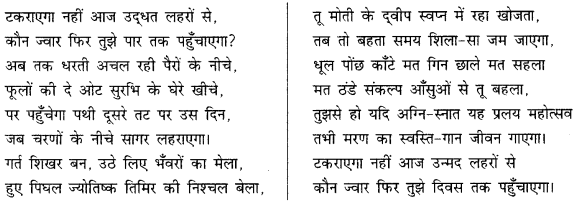
(i) दिए काव्यांश का क्या उदेदश्य प्रतीत होता है?
(क) आत्मविश्वास जगाने हेतु दृष्टांत प्रस्तुति।
(ख) हर हाल में कार्य करने की प्रेरणा
(ग) जागृति व उत्साहित करने हेतु प्रेरणा।
(घ) जीवन-दर्शन के विषय में प्रोत्साहन।
उत्तर-
(ख) हर हाल में कार्य करने की प्रेरणा
(ii) तू मोती के द्वीप स्वप्न में रहा खोजता-पंक्ति का क्या भाव है?
(क) मोतियों के समान आँसुओं को स्वप्न में आने वाले सुंदर द्वीपों पर नष्ट नहीं करना चाहिए।
(ख) मोती के द्वीप खोजने के लिए सागर में दूर-दूर जाकर कष्टदायी विचरण करना होगा।
(ग) जीवन संसाधनों के लिए यथार्थ में रहकर प्रयत्न करना होगा।
(घ) यदि ऐसा होगा तो जीवन शिला-सा जम जाएगा।
उत्तर-
(ग) जीवन संसाधनों के लिए यथार्थ में रहकर प्रयत्न करना होगा।
(iii) तुझसे हो यदि अग्नि स्नात-पंक्ति का क्या अर्थ है?
(क) यदि तुम जीवन की कष्टतम परिस्थिति झेल लोगे तो जीवन तुम्हारे बलिदान की प्रशंसा करेगा।
(ख) यदि तुम आग के दरिया में डूबकर जाने को तैयार हो तो जीवन-मरण के बंधन से मुक्त हो सकोगे।
(ग) जीवन-प्रलय के महोत्सव में आग लगाने वाला ही सफलतम वीर कहलाएगा।
(घ) यदि तुम जीवन में बलिदान करोगे तो जग सदा तुम्हारे जीवन की सराहना करेगा।
उत्तर-
यदि तुम जीवन की कष्टतम परिस्थिति झेल लोगे तो जीवन तुम्हारे बलिदान की प्रशंसा करेगा।
(iv) समय को गतिशील करने के लिए क्या आवश्यक है?
(क) समय का सदुपयोग कर मानव-कल्याण में लगे रहना
(ख) तुच्छ कार्यों में संलग्न न रहकर समय नष्ट होने से बचाना।
(ग) अपने हाल की परवाह न करते हुए सकारात्मक भाव से कार्य करते रहना।
(घ) ‘टाल मटोल-समय का चोर’ कथनानुसार स्वस्ति (शुभ) कार्य करने में टाल-मटोल न करना।
उत्तर-
(ग) अपने हाल की परवाह न करते हुए सकारात्मक भाव से कार्य करते रहना।
(v) काव्यांश के अनुसार ‘फूलों की ओट व सुरभि के घेरे’ व्यक्ति के जीवन में क्या कार्य कर सकते हैं?
(क) वे व्यक्ति के जीवन को अपनी सुगंध से शांत व एकाग्र कर सकते हैं।
(ख) वे अपने औषधीय गुणों से व्यक्ति का जीवन व्याधिमुक्त कर सकते हैं।
(ग) वे उसे लक्ष्य-प्राप्ति के मार्ग से विचलित कर सकते हैं।
(घ) फूल उर्वरता व समृद्धि के प्रतीक हैं। वे जीवन में ईश्वर के प्रति निकटता लाने में सहायक हो सकते हैं।
उत्तर-
(ग) वे उसे लक्ष्य-प्राप्ति के मार्ग से विचलित कर सकते हैं।
व्यावहारिक व्याकरण (अंक 16)
प्रश्न 3.
निम्नलिखित पाँच भागों में से किन्हीं चार भागों के उत्तर दीजिए। (1 × 4 = 4)
(i) ‘हर्षिता बहुत विनम्र है और सर्वत्र सम्मान प्राप्त करती है।’ रचना के आधार पर वाक्य-भेद है?
(क) सरल वाक्य
(ख) मिश्र वाक्य
(ग) संयुक्त वाक्य
(घ) साधारण वाक्य
उत्तर-
(ग) संयुक्त वाक्य
(ii) निम्नलिखित में मिश्र वाक्य है?
(क) मैंने एक वृद्ध की सहायता की।
(ख) जो विद्यार्थी परिश्रमी होता है, वह अवश्य सफल होता है।
(ग) अध्यापिका ने अवनि की प्रशंसा की तथा उसका उत्साह बढ़ाया।
(घ) नवाब साहब ने संगति के लिए उत्साह नहीं दिखाया।
उत्तर-
(ख) जो विद्यार्थी परिश्रमी होता है, वह अवश्य सफल होता है।
(iii) ‘प्रयश बाजार गया। वहाँ से सेब लाया।’ इस वाक्य का संयुक्त वाक्य में रूपांतरण होगा?
(क) प्रयश बाज़ार गया और वहाँ से सेब लाया।
(ख) प्रयश सेब लाया जब वह बाज़ार गया।
(ग) प्रयश बाज़ार जाकर सेब लाया।
(घ) जब प्रयश बाज़ार गया तो वहाँ से सेब लाया।
उत्तर-
(क) प्रयश बाज़ार गया और वहाँ से सेब लाया।
(iv) ‘जो वीर होते हैं, वे रणभूमि में अपनी वीरता का प्रदर्शन करते है।’ रेखांकित उपवाक्य का भेद है?
(क) संज्ञा आश्रित उपवाक्य
(ख) सर्वनाम आश्रित उपवाक्य
(ग) क्रियाविशेषण आश्रित उपवाक्य
(घ) विशेषण आश्रित उपवाक्य
उत्तर-
(घ) विशेषण आश्रित उपवाक्य
(v) निम्नलिखित में सरल वाक्य है?
(क) प्रात:काल हुआ और सूरज की किरणें चमक उठीं।
(ख) जब प्रात:काल हुआ, सूरज की किरणें चमक उठीं।
(ग) प्रात:काल होते ही सूरज की किरणें चमक उठीं।
(घ) जैसे ही प्रात:काल हुआ सूरज की किरणें चमक उठीं।
उत्तर-
(ग) प्रात:काल होते ही सूरज की किरणें चमक उठीं।
प्रश्न 4.
निम्नलिखित पाँच भागों में से किन्हीं चार भागों के उत्तर दीजिए। (1 × 4 = 4)
(i) इस वाक्य का वाच्य लिखिए- ‘अशोक ने विश्व को शांति का संदेश दिया।’
(क) कर्म वाच्य
(ख) भाव वाच्य
(ग) कर्तृ वाच्य
(घ) करण वाच्य
उत्तर-
(ग) कर्तृ वाच्य
(ii) ‘हम इस खुले मैदान में दौड़ सकते है।’ उपर्युक्त वाक्य को भाव वाच्य में बदलिए।
(क) हम दौड़ सकते हैं, इस खुले मैदान में।
(ख) हम इस खुले मैदान में दौड़ सकेंगे।
(ग) हमसे इस खुले मैदान में दौड़ा जाएगा।
(घ) हमसे इस खुले मैदान में दौड़ा जा सकता है।
उत्तर-
(घ) हमसे इस खुले मैदान में दौड़ा जा सकता है।
(iii) ‘सुमन जल्दी नहीं उठती।’ प्रस्तुत वाक्य को भाव वाच्य में बदलिए।
(क) सुमन जल्दी नहीं उठ पाती।
(ख) सुमन जल्दी से नहीं उठ सकेगी।
(ग) सुमन जल्दी नहीं उठ पाएगी।
(घ) सुमन से जल्दी नहीं उठा जाता।
उत्तर-
(घ) सुमन से जल्दी नहीं उठा जाता।
(iv) निम्नलिखित वाक्यों में से कर्तृ वाच्य वाला वाक्य छाँटिए
(क) अरविंद द्वारा कल पत्र लिखा जाएगा।
(ख) बच्चों द्वारा नमस्कार किया गया।
(ग) सरकार द्वारा लोक कलाकारों का सम्मान किया गया।
(घ) नेताजी ने देश के लिए अपना सब कुछ त्याग दिया।
उत्तर-
(घ) नेताजी ने देश के लिए अपना सब कुछ त्याग दिया।
(v) निम्नलिखित में से कौन-सा भाव वाच्य का सही विकल्प नहीं है?
(क) मुझसे अब देखा नहीं जाता।
(ख) आइए चला जाए।
(ग) हमें धोखा दिया जा रहा है।
(घ) राधा से बोला नहीं जाता।
उत्तर-
(ग) हमें धोखा दिया जा रहा है।
प्रश्न 5.
निम्नलिखित पाँच भागों में से किन्हीं चार भागों के उत्तर दीजिए। (1 × 4 = 4)
(i) सूरदास ने सूरसागर की रचना की।’- रेखांकित पद का परिचय है?
(क) जातिवाचक संज्ञा, एकवचन, पुल्लिंग, कर्ता कारक।
(ख) व्यक्तिवाचक संज्ञा, एकवचन, पुल्लिंग, संबंध कारक।
(ग) व्यक्तिवाचक संज्ञा, एकवचन, पुल्लिंग, कर्ता कारक
(घ) जातिवाचक संज्ञा, एकवचन, पुल्लिंग, कर्ता कारक।
उत्तर-
(ग) व्यक्तिवाचक संज्ञा, एकवचन, पुल्लिंग, कर्ता कारक
(ii) ‘वह नित्य घूमने जाता है।’- रेखांकित पद का परिचय है?
(क) गुणवाचक विशेषण, एकवचन, पुल्लिंग, ‘घूमने जाता है’ क्रिया की विशेषता।
(ख) रीतिवाचक क्रियाविशेषण, एकवचन, पुल्लिंग, ‘घूमने जाता है’ क्रिया की विशेषता।
(ग) अव्यय, स्थानवाचक क्रियाविशेषण, ‘घूमने जाता है’ क्रिया की विशेषता।
(घ) अव्यय, कालवाचक क्रियाविशेषण, ‘घूमने जाता है’ क्रिया की विशेषता।
उत्तर-
(घ) अव्यय, कालवाचक क्रियाविशेषण, ‘घूमने जाता है’ क्रिया की विशेषता।
(iii) ‘तालाब में कमल खिलते हैं।’- रेखांकित पद का परिचय है?
(क) सकर्मक क्रिया, बहुवचन, पुल्लिंग, वर्तमान काल, कर्तृ वाच्य।
(ख) अकर्मक क्रिया, बहुवचन, पुल्लिंग, वर्तमान काल, कर्तृ वाच्य।
(ग) सकर्मक क्रिया, एकवचन, पुल्लिंग, वर्तमान काल, कर्तृ वाच्य।
(घ) अकर्मक क्रिया, एकवचन, स्त्रीलिंग, वर्तमान काल, कर्तृवाच्य।
उत्तर-
(ख) अकर्मक क्रिया, बहुवचन, पुल्लिंग, वर्तमान काल, कर्तृ वाच्य।
(iv) ‘रंग-बिरंगे फूल देखकर मन प्रसन्न हो गया।’- रेखांकित पद का परिचय है?
(क) संख्यावाचक विशेषण, एकवचन, पुल्लिंग, ‘फूल’ विशेष्य का विशेषण।
(ख) गुणवाचक विशेषण, बहुवचन, पुल्लिंग, ‘फूल’ विशेष्य का विशेषण।
(ग) गुणवाचक विशेषण, एकवचन, पुल्लिंग, ‘फूल’ विशेष्य का विशेषण।
(घ) गुणवाचक विशेषण, एकवचन, स्त्रीलिंग, ‘फूल’ विशेष्य का विशेषण।
उत्तर-
(ख) गुणवाचक विशेषण, बहुवचन, पुल्लिंग, ‘फूल’ विशेष्य का विशेषण।
(v) ‘प्रधानाचार्य ने आपको बुलाया है।’- रेखांकित पद का परिचय है?
(क) मध्यम पुरुषवाचक सर्वनाम, स्त्रीलिंग, बहुवचन, कर्ता कारक।
(ख) निजवाचक सर्वनाम, पुल्लिंग, एकवचन, कर्ता कारक।
(ग) मध्यम पुरुषवाचक सर्वनाम, स्त्रीलिंग/पुल्लिंग, एकवचन, कर्म कारक।
(घ) उत्तम पुरुषवाचक सर्वनाम, स्त्रीलिंग/पुल्लिंग, एकवचन, कर्म कारक।
उत्तर-
(ग) मध्यम पुरुषवाचक सर्वनाम, स्त्रीलिंग/पुल्लिंग, एकवचन, कर्म कारक।
प्रश्न 6.
निम्नलिखित पाँच भागों में से किन्हीं चार भागों के उत्तर दीजिए। (1 × 4 = 4)
(i) भय की अधिकता में किस रस की निष्पत्ति होती है?
(क) वीर रस
(ख) करुण रस
(ग) भयानक रस
(घ) रौद्र रस
उत्तर-
(ग) भयानक रस
(ii) ‘निर्वेद’ किस रस का स्थायी भाव है?
(क) शांत रस
(ख) करुण रस
(ग) हास्य रस
(घ) शृंगार रस
उत्तर-
(क) शांत रस
(iii) ‘तनकर भाला यूँ बोल उठा राणा मुझको विश्राम न दे मुझको वैरी से ह्रदय-क्षोभ तू तनिक मुझे आराम न दे।’ उपर्युक्त काव्य पंक्तियों में निहित रस है?
(क) वीर रस
(ख) शांत रस
(ग) करुण रस
(घ) रौद्र रस
उत्तर-
(क) वीर रस
(iv) किस रस को ‘रसराज’ भी कहा जाता है?
(क) शांत रस।
(ख) करुण रस।
(ग) हास्य रस।
(घ) शृंगार रस
उत्तर-
(घ) शृंगार रस
(v) ‘वीभत्स रस’ का स्थायी भाव है?
(क) उत्साह
(ख) शोक
(ग) जुगुप्सा
(घ) हास
उत्तर-
(ग) जुगुप्सा
पाठ्यपुस्तक (अंक 14)
प्रश्न 7.
निम्नलिखित गद्यांश को पढ़कर प्रश्नों के सर्वाधिक उपयुक्त विकल्पों का चयन कीजिए। (1 x 5=5)
खेतीबारी करते, परिवार रखते भी, बालगोबिन भगत साधु थे- साधु की सब परिभाषाओं में खरे उतरनेवाले। कबीर को ‘साहब’ मानते थे, उन्हीं के गीतों को गाते, उन्हीं के आदेशों पर चलते। कभी झूठ नहीं बोलते, खरा व्यवहार रखते। किसी से भी दो-टूक बात करने में संकोच नहीं करते, न किसी से खामखाह झगड़ा मोल लेते। किसी की चीज़ नहीं छूते, न बिना पूछे व्यवहार में लाते। इस नियम को कभी-कभी इतनी बारीकी तक ले जाते कि लोगों को कुतूहल होता!- कभी वह दूसरे के खेत में शौच के लिए भी नहीं बैठते! वह गृहस्थ थे; लेकिन उनकी सब चीज़ ‘साहब’ की थी। जो कुछ खेत में पैदा होता, सिर पर लादकर पहले उसे ‘साहब’ के दरबार में ले जाते- जो उनके घर से चार कोस दूर पर था-एक कबीरपंथी मठ से मतलब! वह दरबार में ‘भेंट’ रूप रख लिया जाता। ‘प्रसाद’ रूप में जो उन्हें मिलता, उसे घर लाते और उसी से गुज़र चलाते!
(i) लेखक ने बालगोबिन भगत को साधु क्यों कहा है?
(क) वे साधु के समान दिखते थे।
(ख) वे मोह-माया से दूर थे।
(ग) वे सच्चे साधुओं जैसा ही उत्तम आचार-विचार रखते थे।
(घ) वे किसी से झगड़ा नहीं करते थे।
उत्तर-
(ग) वे सच्चे साधुओं जैसा ही उत्तम आचार-विचार रखते थे।
(ii) बालगोबिन भगत का कौन-सा कार्य-व्यवहार लोगों के आश्चर्य का विषय था?
(क) जीवन के सिद्धांतों और आदर्शों का गहराई से अपने आचरण में पालन करना।
(ख) गीत गाते रहना।
(ग) किसी से झगड़ा न करना।
(घ) अपना काम स्वयं करना।
उत्तर-
(क) जीवन के सिद्धांतों और आदर्शों का गहराई से अपने आचरण में पालन करना।
(iii) बालगोबिन भगत कबीर के आदर्शों पर चलते थे क्योंकि?
(क) कबीर भगवान का रूप थे।
(ख) वे कबीर की विचारधारा से प्रभावित थे।
(ग) कबीर उनके गाँव के मुखिया थे।
(घ) कबीर उनके मित्र थे।
उत्तर-
(ख) वे कबीर की विचारधारा से प्रभावित थे।
(iv) बालगोबिन भगत के खेत में जो कुछ पैदा होता, उसे वे सर्वप्रथम किसे भेंट कर देते?
(क) गरीबों को
(ख) मंदिर में
(ग) घर में
(घ) कबीरपंथी मठ में
उत्तर-
(घ) कबीरपंथी मठ में
(v) ‘वह गृहस्थ थे; लेकिन उनकी सब चीज़ ‘साहब’ की थी।’ यहाँ ‘साहब’ से क्या आशय है?
(क) गुरु
(ख) मुखिया
(ग) कबीर
(घ) भगवान
उत्तर-
(ग) कबीर
प्रश्न 8.
निम्नलिखित प्रश्नों के उत्तर सही विकल्प चुनकर लिखिए। (1 x 2 = 2 )
(i) ‘नेताजी का चश्मा’ कहानी में कैप्टन कौन था?
(क) हालदार साहब
(ख) पानवाला
(ग) चश्मे बेचनेवाला
(घ) अध्यापक
उत्तर-
(ग) चश्मे बेचनेवाला
(ii) फ़ादर कामिल बुल्के का हिंदी प्रेम किस प्रसंग से प्रकट होता है?
(क) उन्होंने प्रामाणिक अंग्रेज़ी-हिंदी शब्दकोश तैयार किया।
(ख) भारत आकर पढ़ना।
(ग) ‘परिमल’ के सदस्यों से गहरा लगाव।
(घ) भारतीय संस्कृति के अभिन्न अंग थे।
उत्तर-
(क) उन्होंने प्रामाणिक अंग्रेज़ी-हिंदी शब्दकोश तैयार किया।
प्रश्न 9.
निम्नलिखित पद्यांश को पढ़कर प्रश्नों के सर्वाधिक उपर्युक्त विकल्पों का चयन कीजिए। (1 x 5 = 5)
हमारे हरि हारिल की लकरी। ङ्केमन क्रम बचन नंद-नंदन उर, यह दृढ़ करि पारी) जागत सोवत स्वप्न दिवस-निसि, कान्ह-कान्ह जकरी। सुनत जोग लागत है ऐसौ, ज्यौं करुई ककरी। सु तौ ब्याधि हमकौ लै आए, देखी सुनी न करी। यह तौ ‘सूर’ तिनहिं लै सौंपौ, जिनके मन चकरी।।
(i) गोपियों ने अपनी तुलना हारिल के पक्षी से क्यों की है?
(क) हारिल पक्षी सदैव लकड़ी लिए उड़ता है।
(ख) गोपियों को हारिल पक्षी पसंद है।
(ग) श्रीकृष्ण के प्रति अपने एकनिष्ठ प्रेम के कारण
(घ) श्रीकृष्ण के प्रति अपनी नाराज़गी के कारण
उत्तर-
(ग) श्रीकृष्ण के प्रति अपने एकनिष्ठ प्रेम के कारण
(ii) ‘नंद-नंदन विशेषण किसके लिए प्रयुक्त हुआ है?
(क) श्रीकृष्ण के लिए
(ख) गोपियों के लिए
(ग) उद्धव के लिए
(घ) नंद के लिए
उत्तर-
(क) श्रीकृष्ण के लिए
(iii) गोपियाँ किसे व्याधि कह रही हैं?
(क) उद्धव की बातों को
(ख) उद्धव के योग ज्ञान को
(ग) श्रीकृष्ण के विरह को
(घ) श्रीकृष्ण के प्रेम को
उत्तर-
(ख) उद्धव के योग ज्ञान को
(iv) गोपियों को योग-साधना कैसी लगती है?
(क) हारिल की लकड़ी की तरह
(ख) हारिल पक्षी के समान
(ग) जिसे कभी न देखा हो
(घ) कड़वी ककड़ी के समान
उत्तर-
(घ) कड़वी ककड़ी के समान
(v) गोपियाँ योग का संदेश किनके लिए उपर्युक्त समझती हैं?
(क) जो श्रीकृष्ण से प्रेम नहीं करते
(ख) जिनका मन स्थिर नहीं है
(ग) जिनका मन स्थिर है।
(घ) श्रीकृष्ण के लिए
उत्तर-
(ख) जिनका मन स्थिर नहीं है
प्रश्न 10.
निम्नलिखित में से निर्देशानुसार विकल्पों का चयन कीजिए। (1 x 2 = 2)
(i) क्रोधित होते हुए भी परशुराम जी ने लक्ष्मण का वध क्यों नहीं किया?
(क) लक्ष्मण ने शिव-धनुष भंग नहीं किया था
(ख) लक्ष्मण को कम आयु का बालक जानकर
(ग) सभा में सब उपस्थित थे
(घ) वे ब्राह्मण थे
उत्तर-
(ख) लक्ष्मण को कम आयु का बालक जानकर
(ii) ‘कन्यादान’ कविता में स्त्री जीवन के बंधन किसे कहा गया है?
(क) समाज को
(ख) अशिक्षा को
(ग) अत्याचारों को
(घ) वस्त्रों-आभूषणों को
उत्तर-
(घ) वस्त्रों-आभूषणों को
खंड ‘ब’- वर्णनात्मक प्रश्न (अंक 40)
पाठ्यपुस्तक एवं पूरक पाठ्यपुस्तक (अंक 20)
प्रश्न 11.
निम्नलिखित प्रश्नों के उत्तर लगभग 25-30 शब्दों में लिखिए। (2 x 4 = 8)
(क) हालदार साहब कैप्टन को देखकर अवाक क्यों रह गए? ‘नेताजी का चश्मा’ पाठ के आधार पर लिखिए।
(ख) बालगोबिन भगत जी अपनी पतोहू को उत्सव मनाने को क्यों कहते हैं?
(ग) ‘लखनवी अंदाज़’ पाठ के आधार पर बताइए कि लेखक ने खीरा खाने से मना क्यों किया?
(घ) फादर कामिल बुल्के एक संन्यासी थे, परंतु पारंपरिक अर्थ में हम उन्हें संन्यासी क्यों नहीं कह सकते?
उत्तर-
(क) हालदार साहब की कल्पना थी कि कैप्टन प्रभावशाली व्यक्तित्व का स्वामी होगा, पर उनकी कल्पना के विपरीत कैप्टन अत्यंत बूढा, कमज़ोर और लँगड़ा आदमी था। ऐसा निर्धन, बूढ़ा तथा कमज़ोर-सा व्यक्ति भी देशभक्ति से ओत-प्रोत हो सकता है, यह देखकर हालदार साहब अवाक रह गए।
(ख) भगत जी का मानना था कि आत्मा परमात्मा का अंश है। वह सदा परमात्मा से मिलने के लिए तड़पती है, जब व्यक्ति मरता है, तो आत्मा परमात्मा से मिल जाती है, उसकी तड़पन समाप्त हो जाती है, इसलिए भगत जी अपनी पतोहू को उत्सव मनाने की बात कह रहे थे।
(ग) लेखक कुछ समय पहले नवाब साहब द्वारा रखे गए खीरे खाने के आमंत्रण को ठुकरा चुके थे, अतः अब आत्मसम्मान निभाना आवश्यक समझने के कारण उन्होंने खीरा खाने से इनकार कर दिया।
(घ) लेखक ने फ़ादर कामिल बुल्के की उपस्थिति को देवदार की छाया के सदृश्य इसलिए कहा है, क्योंकि फ़ादर का विशाल व्यक्तित्व मिलने वालों को शांति, सुकून, आशीर्वाद, प्यार एवं अपनत्व से भर देता था।
प्रश्न 12.
निम्नलिखित प्रश्नों के उत्तर लगभग 25-30 शब्दों में लिखिए। (2 x 3 = 6)
(क) ‘मनुष्यता’ कविता और ‘अब कहाँ दूसरे के दुख से दुखी होने वाले’ पाठ का केंद्रीय भाव एक ही है। सिद्ध कीजिए।
(ख) ‘अट नहीं रही है’ कविता के आधार पर फागुन में उमड़े प्राकृतिक सौंदर्य का वर्णन अपने शब्दों में कीजिए।
(ग) धनुष भंग करने वाली सभा में एकत्रित जन ‘हाय-हाय’ क्यों पुकारने लगे थे? राम-लक्ष्मण-परशुराम संवाद’ पाठ के आधार पर अपने विचार लिखिए।
उत्तर-
(क) कवि ‘निराला’ ने ‘नवजीवन वाले’ बादलों के लिए प्रयोग किया है। बादलों की विशेषता है कि तप्त धरती के ताप को शांत कर प्रकृति को नया जीवन देते हैं। प्रकृति की प्रफुल्लता के साथ-साथ इनके द्वारा पशु-पक्षी, मानव सभी में नवीन उत्साह का संचार होता है।
(ख) फागुन मास में चारों ओर प्राकृतिक सौंदर्य और उल्लास दिखाई पड़ता है। सरसों के पीले फूलों की चादर बिछ जाती है। लताएँ और डालियाँ रंग-बिरंगे फूलों से सज जाती हैं। पर्यावरण स्वयं प्रफुल्लित हो उठता है।
(ग) सभा में परशुराम और लक्ष्मण के मध्य बहुत तीखी नोक-झोंक हो गई। परशुराम तो स्वभाव से क्रोधी थे ही। लक्ष्मण ने बालक होने पर भी अपने व्यंग्य-वचनों से उनके क्रोध को भड़का दिया। लक्ष्मण द्वारा बहुत तीखे कटाक्ष करने पर सभा में एकत्रित लोग ‘हाय-हाय’ कहने लगे।
प्रश्न 13.
निम्नलिखित प्रश्नों में से किन्हीं दो प्रश्नों के उत्तर लगभग 40-50 शब्दों में लिखिए। (3 x 2 =6)
(क) ‘माता का अँचल’ पाठ के आधार पर बताइए कि तत्कालीन व वर्तमान समय में बच्चों की खेल-सामग्रियों में क्या परिवर्तन आए हैं? बच्चों के खेलों में हुए परिवर्तनों का उनके मूल्यों पर कितना प्रभाव पड़ा है?
(ख) सरकारी तंत्र में जॉर्ज पंचम की नाक लगाने को लेकर जो चिंता और बदहवासी दिखाई देती है, वह उनकी किस मानसिकता को दर्शाती है? स्पष्ट कीजिए।
(ग) ‘साना-साना हाथ जोड़ि’ पाठ में कहा गया है कि ‘कटाओ’ पर किसी दुकान का न होना वरदान है, ऐसा क्यों? भारत के अन्य प्राकृतिक स्थानों को वरदान बनाने में युवा नागरिक की क्या भूमिका हो सकती है?
उत्तर-
(क) ‘माता का अँचल’ पाठ में भोलानाथ और उसके साथियों के खेल सामूहिक रूप से मिल-जुलकर खेले जाते थे। उनके खेलने की सामग्री बच्चों द्वारा स्वयं निर्मित की जाती थी। घर की अनुपयोगी वस्तु ही उनके खेल की सामग्री बनती थी, जबकि आज प्लास्टिक के खिलौने और इलेक्ट्रॉनिक खिलौनों का प्रचलन है।
खेल-सामग्री में आए अंतर ने बच्चों के नैतिक मूल्यों को भी प्रभावित किया है। वर्तमान समय में बच्चों द्वारा जो खेल खेले जाते हैं, उन्होंने बच्चों को एकाकी बना दिया है। उनमें सहयोग, सहभागिता, सामाजिकता जैसे गुण धीरे-धीरे समाप्त होते जा रहे हैं।
(ख) सरकारी तंत्र में जॉर्ज पंचम की नाक लगाने को लेकर जो चिंता और बदहवासी दिखाई देती है, वह उनकी गुलाम मानसिकता को दर्शाती है। उनके मन में आज भी अंग्रेज़ों की गुलामी और स्वामीभक्ति बसी हुई है। उन्हें अंग्रेज़ों के मान-सम्मान की चिंता अपने मान-सम्मान से अधिक है। इस तरह सरकारी तंत्र अपनी मानसिक गुलामी और चाटुकारिता को दर्शाता है।
(ग) ‘कटाओ’ पर किसी दुकान का न होना उसके लिए वरदान है। यदि इस स्थान पर दुकानें होती तो व्यापारिक गतिविधियाँ बढ़ जातीं, वाहनों का आवागमन बढ़ता, जिससे प्रदूषण तथा तापमान बढ़ जाता। भारत के अन्य प्राकृतिक स्थानों को वरदान बनाने में युवा नागरिक की भूमिका-वहाँ स्वच्छता का विशेष ध्यान रखें, सार्वजनिक वाहनों का प्रयोग करें, वृक्षों को न काटें, नदियों के जल को दूषित न करें, प्राकृतिक संसाधनों का दुरुपयोग न करें, लोगों को पर्यावरण के विषय में जागरूक करें।
लेखन (अंक 20)
प्रश्न 14.
निम्नलिखित में से किसी एक विषय पर दिए गए संकेत-बिन्दुओं के आधार पर लगभग 80-100 शब्दों में एक अनुच्छेद लिखिए। (5 x 1 =5)
(क) परीक्षा से पहले मेरी मनोदशा
संकेत-बिंदु-
- परीक्षा नाम से भय
- पर्याप्त तैयारी
- प्रश्न-पत्र देखकर भय दूर हुआ।
उत्तर-
भूमिका – 1 अंक
(ख) कोरोना वायरस
संकेत-बिंदु-
- कोरोना का संक्रमण
- बचाव के उपाय
- लॉकडाउन के सकारात्मक प्रभाव।
उत्तर-
विषयवस्तु – 3 अंक
(ग) जंक फूड
संकेत-बिंदु-
- जंक फूड क्या होता है?
- युवा पीढ़ी और जंक फूड
- जंक फूड खाने के दुष्परिणाम।
उत्तर-
भाषा – 1 अंक
प्रश्न 15.
एक दैनिक समाचार-पत्र के संपादक को अपनी कविता प्रकाशित करवाने का अनुरोध करते हुए एक पत्र 80-100
शब्दों में लिखिए। (5 x 1 = 5)
अथवा
छात्रावास में रहने वाले अपने छोटे भाई को एक पत्र 80-100 शब्दों में लिखकर प्रातःकाल नियमित रूप से योग एवं प्राणायाम का अभ्यास करने के लिए प्रेरित कीजिए।
उत्तर-
- आरंभ और अंत की औपचारिकताएँ – 1 अंक
- विषय वस्तु – 3 अंक
- भाषा – 1 अंक
प्रश्न 16.
पर्यावरण विभाग की ओर से जल-संरक्षण का आग्रह करते हुए एक विज्ञापन लगभग 25-50 शब्दों में तैयार कीजिए। (5 x 1 =5)
अथवा
‘रोशनी’ मोमबत्ती बनाने वाली कंपनी के लिए एक विज्ञापन लगभग 25-50 शब्दों में तैयार कीजिए।
उत्तर-
- विषयवस्तु – 2 अंक
- प्रस्तुति – 2 अंक
प्रश्न 17.
अपनी छोटी बहन के जन्मदिवस पर उसे एक बधाई संदेश 30-40 शब्दों में लिखिए। (5 x 1 = 5)
अथवा
“शिक्षक दिवस’ के अवसर पर अपने हिंदी शिक्षक के लिए एक भावपूर्ण संदेश 30-40 शब्दों में लिखिए।
उत्तर-
- रचनात्मक प्रस्तुति – 2 अंक
- विषयवस्तु – 2 अंक
- भाषा – 1 अंक
